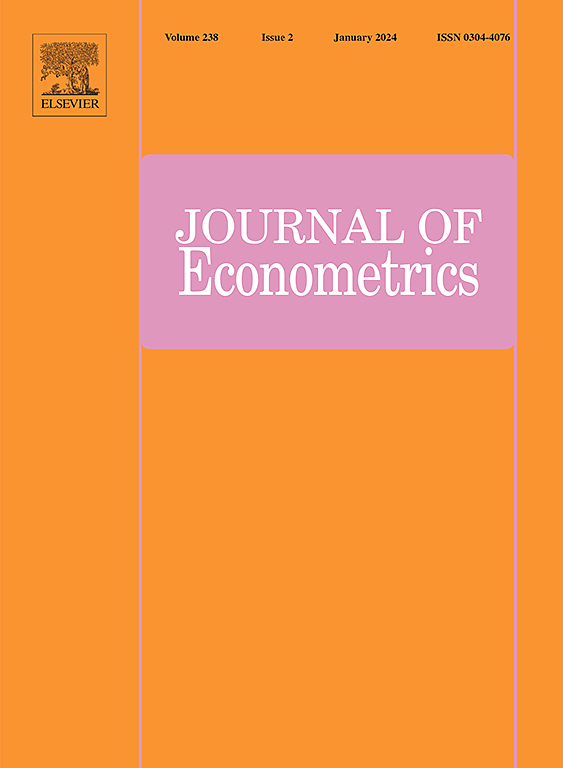一个阶不变分数驱动的动态因子模型
IF 4
3区 经济学
Q1 ECONOMICS
引用次数: 0
摘要
本文介绍了一种新的分数驱动的动态因子模型,用于过滤时间序列面板的横截面协同运动。该模型采用噪声项的椭圆分布,允许时变参数的更新具有潜在的非线性和对异常值的鲁棒性。我们得到了由模型产生的时间序列的随机性质,如平稳性和遍历性,并建立了滤波器的可逆性。我们证明了因素和载荷的识别是通过结合载荷的正交性约束来实现的,这对面板中序列的顺序是不变的。考虑到约束的非线性,我们提出利用Stiefel流形上的极大似然估计。该方法在数值上满足辨识约束,实现了静态参数和时变参数的联合估计。进一步,给出了约束估计量的渐近性质。在一系列的蒙特卡罗实验中,我们发现了估计器的适当有限样本性质的证据,并得到了时变参数的分数滤波器。我们证明了因子模型在1981-2022年期间从一组宏观经济和金融变量构建经济活动指数方面的经验有用性。一项实证应用强调了稳健性的重要性,特别是在出现v型衰退的情况下,比如新冠肺炎疫情引发的衰退。本文章由计算机程序翻译,如有差异,请以英文原文为准。
An order-invariant score-driven dynamic factor model
This paper introduces a novel score-driven dynamic factor model designed for filtering cross-sectional co-movements in panels of time series. The model is formulated using elliptical distribution for noise terms, allowing the update of the time-varying parameter to be potentially nonlinear and robust to outliers. We derive stochastic properties of time series generated by the model, such as stationarity and ergodicity, and establish the invertibility of the filter. We prove that the identification of the factors and loadings is achieved by incorporating an orthogonality constraint on the loadings, which is invariant to the order of the series in the panel. Given the nonlinearity of the constraint, we propose exploiting a maximum likelihood estimation on Stiefel manifolds. This approach ensures that the identification constraint is satisfied numerically, enabling joint estimation of the static and time-varying parameters. Furthermore, the asymptotic properties of the constrained estimator are derived. In a series of Monte Carlo experiments, we find evidence of appropriate finite sample properties of the estimator and resulting score filter for the time-varying parameters. We demonstrate the empirical usefulness of our factor model in constructing indices of economic activity from a set of macroeconomic and financial variables during the period 1981–2022. An empirical application highlights the importance of robustness, particularly in the presence of V-shaped recessions, such as the COVID-19 recession.
求助全文
通过发布文献求助,成功后即可免费获取论文全文。
去求助
来源期刊

Journal of Econometrics
社会科学-数学跨学科应用
CiteScore
8.60
自引率
1.60%
发文量
220
审稿时长
3-8 weeks
期刊介绍:
The Journal of Econometrics serves as an outlet for important, high quality, new research in both theoretical and applied econometrics. The scope of the Journal includes papers dealing with identification, estimation, testing, decision, and prediction issues encountered in economic research. Classical Bayesian statistics, and machine learning methods, are decidedly within the range of the Journal''s interests. The Annals of Econometrics is a supplement to the Journal of Econometrics.
 求助内容:
求助内容: 应助结果提醒方式:
应助结果提醒方式:


